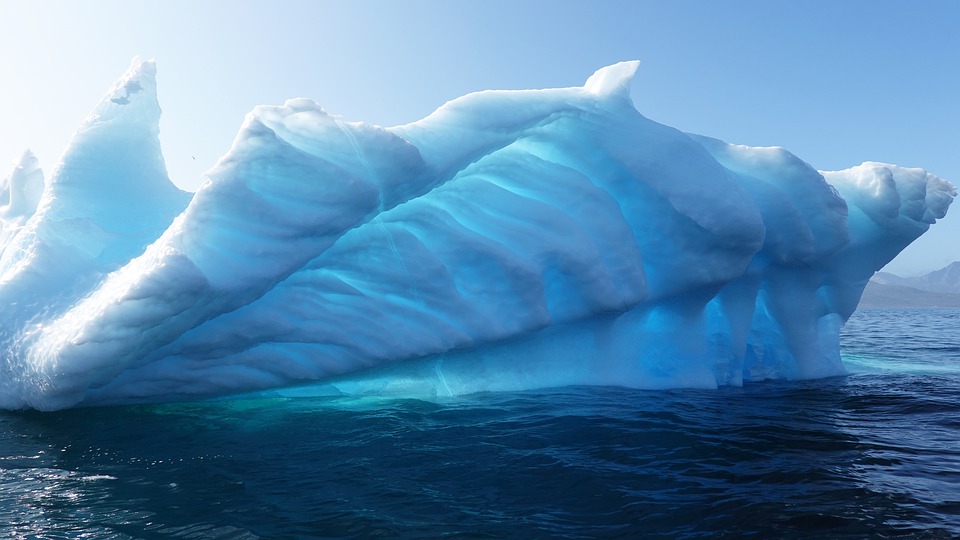Climate change is one of the leading problems we face in the world today, with the rising temperatures posing grave consequences in the long-term. Unfortunately, it appears that the situation will only worsen as scientists have found that the ice sheet on Greenland is now melting faster than ever before.
A study that was published in Nature Communications Earth and Environment analyzed 40 years’ worth of data from satellites surrounding Greenland and found that should the issue of climate change be solved today, the ice sheet in Greenland will continue to melt. This is because Greenland’s glaciers can no longer replenish the amount of ice that is flowing into the oceans. The researchers studied 200 large glaciers that are melting into the surrounding oceans.
“We’ve been looking at these remote sensing observations to study how ice discharge and accumulation have varied, and what we’ve found is that the ice that’s discharging into the ocean is far surpassing the snow that’s accumulating on the surface of the ice sheet,” said researcher and the study’s lead author Michalea King, a doctorate student from the Ohio State University Byrd Polar and Climate Research Center.
To add to the findings, the National Snow and Ice Data Center revealed that the snowfall contribution to the ice sheet early this year was a little below average. However, the center also noted that the snowfall that happened back in June helped balance the ice sheet a little, delaying the surface mass loss the ice sheet was experiencing.
Aside from climate change, scientists have warned of a volcanic eruption that can potentially occur in Iceland. They warned that Iceland’s Grímsvötn volcano may be close to erupting. The Icelandic volcano usually erupts every nine to 10 years, but as nine years have already passed, scientists have warned that an eruption from Grímsvötn could occur sometime within the remainder of the year. The researchers believe that the volcano is already showing signs of changes in pressure, which preceded its previous eruptions back in 2011 and even further back in 2004.
According to Benedikt Ofeigsson of the Icelandic Meteorological Office, “Currently we have a state of the volcano which is very similar to the pre-eruptive conditions before 2011 and 2004 eruptions.”



 Extreme heat, flooding, wildfires – Colorado’s formerly incarcerated people on the hazards they faced behind bars
Extreme heat, flooding, wildfires – Colorado’s formerly incarcerated people on the hazards they faced behind bars  Fertile land for growing vegetables is at risk — but a scientific discovery could turn the tide
Fertile land for growing vegetables is at risk — but a scientific discovery could turn the tide  SpaceX Starship Explodes in Texas During Test, Citing Nitrogen Tank Failure
SpaceX Starship Explodes in Texas During Test, Citing Nitrogen Tank Failure  Burkina Faso and Mali’s fabulous flora: new plant life record released
Burkina Faso and Mali’s fabulous flora: new plant life record released  Drug pollution in water is making salmon take more risks – new research
Drug pollution in water is making salmon take more risks – new research  Neuren Pharmaceuticals Surges on U.S. Patent Win for Rare Disorder Drug
Neuren Pharmaceuticals Surges on U.S. Patent Win for Rare Disorder Drug  An unexpected anomaly was found in the Pacific Ocean – and it could be a global time marker
An unexpected anomaly was found in the Pacific Ocean – and it could be a global time marker  Astronomers have discovered another puzzling interstellar object − this third one is big, bright and fast
Astronomers have discovered another puzzling interstellar object − this third one is big, bright and fast  NASA Astronauts Wilmore and Williams Recover After Boeing Starliner Delay
NASA Astronauts Wilmore and Williams Recover After Boeing Starliner Delay  Lab-grown meat: you may find it icky, but it could drive forward medical research
Lab-grown meat: you may find it icky, but it could drive forward medical research  GesiaPlatform Launches Carbon-Neutral Lifestyle App ‘Net Zero Heroes’
GesiaPlatform Launches Carbon-Neutral Lifestyle App ‘Net Zero Heroes’  CDC Vaccine Review Sparks Controversy Over Thimerosal Study Citation
CDC Vaccine Review Sparks Controversy Over Thimerosal Study Citation  FDA Adds Fatal Risk Warning to J&J and Legend Biotech’s Carvykti Cancer Therapy
FDA Adds Fatal Risk Warning to J&J and Legend Biotech’s Carvykti Cancer Therapy  We combed through old botanical surveys to track how plants on Australia’s islands are changing
We combed through old botanical surveys to track how plants on Australia’s islands are changing  Trump Signs Executive Order to Boost AI Research in Childhood Cancer
Trump Signs Executive Order to Boost AI Research in Childhood Cancer  The UK is surprisingly short of water – but more reservoirs aren’t the answer
The UK is surprisingly short of water – but more reservoirs aren’t the answer 































